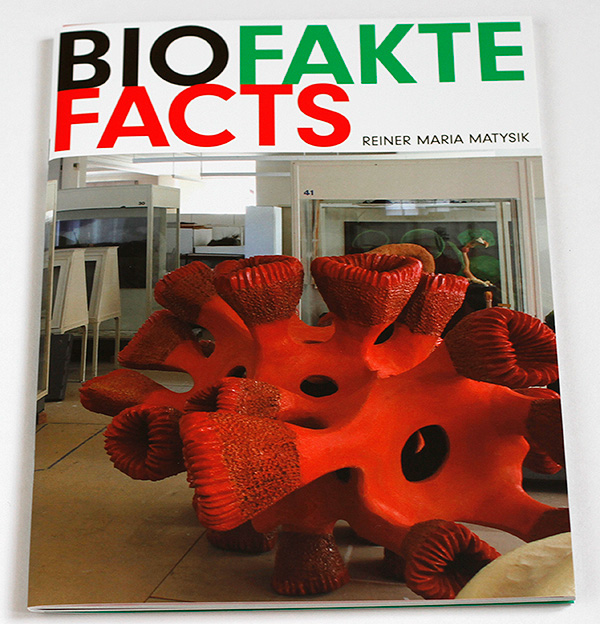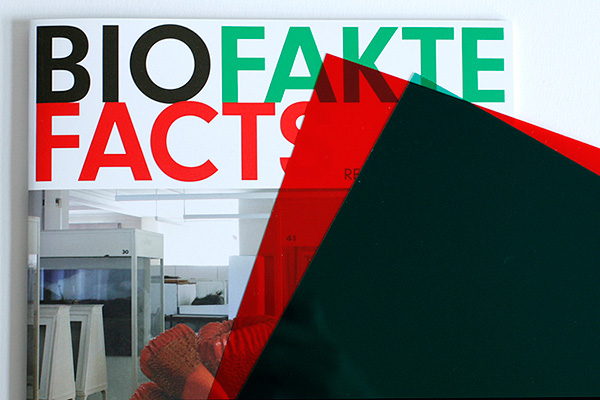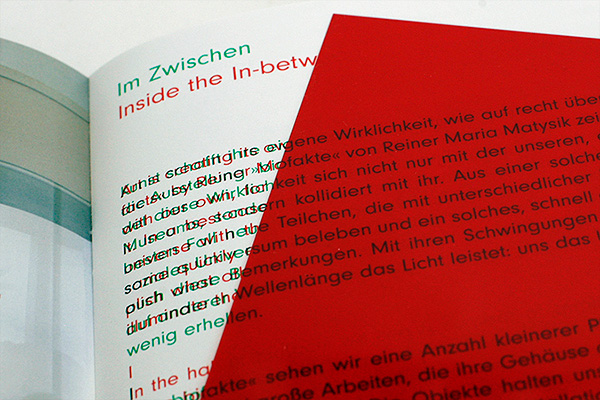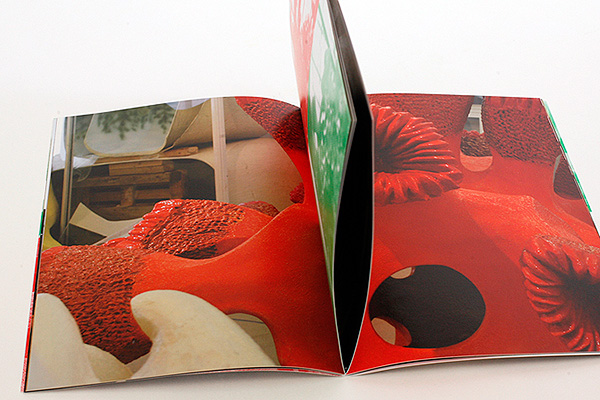biofacts




Der Sammlungsbereich für biofakte führt die biologische Vielfalt der biofakte über die Ausstellung detailgetreuer Modelle vor. In einem eigens dafür eingerichteten Flügel des Zoologischen Forschungsmuseums Alexander Koenig wurde in einer Rekonstruktion des Ausbruchs von biofaktischen Organismen die postevolutionäre Biodiversität in der Sonderausstellung biofakte – Organismen der Zukunft gezeigt.
Mit dem Neologismus »Biofakt« soll ein hermeneutisches Konzept vorgestellt werden, das nach dem Unterschied von »Natur« und »Technik« im Bereich des Lebendigen zu fragen erlaubt. »Leben« wird dabei vermittelt zwischen Subjekt- und Objektperspektive untersucht und im Verhältnis zu »Wachstum« als Reflexionsbegriff bestimmt. Vorgestellt werden exemplarisch Konzeptualisierungen des Wachstums als a) Bewegung und b) Medium und Mittel, ihrerseits vermittelt u.a. über das Modell des Netzwerks. Nicht nur durch die rezenten Biotechniken, in denen »Leben« ein Begriff für epistemische Objekte innerhalb natur- und technikwissenschaftlicher Kategorien ist, werden die Grenzen zwischen »Natur« und »Technik« zunehmend phänomenal diffus. Sondern auch im Hinblick auf das anthropologische Konzept der Hybridität des Menschen zeigen sich die fragilen Identitätsbedingungen des menschlichen Individuums. Als Ergebnis werden drei Biofakttypen (I–III) vorgestellt, bei denen Wachstum als vor- und zuhandenes Mittel im Dienste der Reproduktion genutzt wird. Die Verpflanzung (Transplantation) versammelt dabei diejenigen Techniken, in denen die Medialität der Natur notwendig
bleibt.
aus: Biofakte – Grundlagen, Probleme, Perspektiven, Prof. Dr. Nicole C. Karafyllis, 2006
The biofact collection area demonstrates biofact biodiversity via the exhibition of detailed models. In a dedicated wing of the Zoological Research Museum Alexander Koenig, a reconstruction of the outbreak of biofactual organisms showed the post-evolutionary biodiversity in the special exhibition biofakte – Organismen der Zukunft.
The neologism „biofact“ is intended to introduce a hermeneutic concept that allows us to ask about the difference between „nature“ and „technology“ in the realm of the living. „Life“ will be examined from the perspective of subject and object and defined in relation to „growth“ as a concept of reflection. Exemplary conceptualisations of growth as a) movement and b) medium and means are presented, in turn mediated by the model of the network, among others. Not only through recent biotechnologies, in which „life“ is a term for epistemic objects within natural and technical scientific categories, are the boundaries between „nature“ and „technology“ becoming increasingly phenomenally diffuse. But also with regard to the anthropological concept of human hybridity, the fragile identity conditions of the human individual become apparent. As a result, three types of biofact (I‑III) are presented in which growth is used as a pre-existing and available means in the service of reproduction. Transplantation brings together those techniques in which the mediality of nature remains necessary.
from: Biofakte – Grundlagen, Probleme, Perspektiven, Prof. Dr. Nicole C. Karafyllis, 2006
Kuratorin: Dr. Carola Dürr
Direktor Forschungsmuseum Alexander Koenig: Prof. Dr. Johann Wolfgang Wägele
Projektleitung Forschungsmuseum Alexander Koenig: Dr. Thomas Gerken, Dipl. Des. Uwe Vaartjes
Redaktion: Reiner Maria Matysik
Gestaltung: Delia Keller
Druck: agit-druck
Die Ausstellung biofakte entstand im Rahmen des Kulturprogramms zur 9. UN-Naturschutzkonferenz Biologische Vielfalt (Convention of Biological Diversity – CBD) 2008 in Bonn.
Ausstellung und Publikation wurden gefördert von der Staatskanzlei Nordrhein-Westfalen.
Mit Dank an das Bundesministerium für Umwelt, Naturschutz und Reaktorsicherheit
Das Zoologische Forschungsmuseum Alexander Koenig in Bonn (ZFMK) ist eines der großen naturgeschichtlichen Forschungsmuseen in Deutschland. Den führenden Ruf hat sich das Museum durch die Dokumentation, Erforschung und Erklärung von Artenvielfalt (Biodiversität) erarbeitet.
The collection for biofacts is presenting the biological diversity of biofacts in an exhibition of detailed sculptures. Arranged in a special dedicated wing of the Alexander Koenig Zoological Research Museum, the post-evolutionary biodiversity was shown in a reconstruction of the eruption of biofactual organisms during the exhibition biofacts – Organisms of the Future.
With the neologism »biofact« a hermeneutic concept is developed, which allows to ask for the differences between »nature« and »technology« in the area of the living. »Life« thus is examined in an intermediary perspective between subject and object and is outlined by reflecting on the term »growth«. In the article two different concepts, a) growth understood as movement, and b) growth understood as media and mean (in the sense of »tool«), are suggested for a modern perspective, which is represented by e.g. network-models. Not only by recent biotechnological progress, where »life« is regarded as a quality applying to epistemic objects within scientific categories, but also by the anthropological concept of hybridity, the borders between the natural and the artificial become vague on the phenomenological level. The essay concludes with a system of three biofact-types (I–III), where growth is a mean for reproduction serving as both: a tool ready-at-hand and a tool presence-at-hand. Transplantation techniques nevertheless necessarily imply the presence of nature as it is.
from: Biofakte – Grundlagen, Probleme, Perspektiven, Prof. Dr. Nicole C. Karafyllis, 2006
Curator: Dr. Carola Dürr
Director Zoological Research Museum Alexander Koenig: Prof. Dr. Johann Wolfgang Wägele
Project Management Forschungsmuseum Alexander Koenig: Dr. Thomas Gerken, Dipl.-Des. Uwe Vaartjes
Editorial: Reiner Maria Matysik
Design: Delia Keller
Printed by: agit-druck
The special exhibition biofacts is part of the framework program of the 9th Meeting of the Conference of the Parties to the Convention on Biological Diversity.
Exhibition and publication supported by: Office of the president of the minister of the land North Rhine-Westfalia
Thanks to the Federal Ministry for the Environment, Nature Conversation and Nuclear Safety
The Zoological Research Museum Alexander Koenig in Bonn (ZFMK) is one of the largest natural-history-research museums in Germany. The museum has earned its reputation as a leader in the documentation, research, and interpretation of biodiversity.

